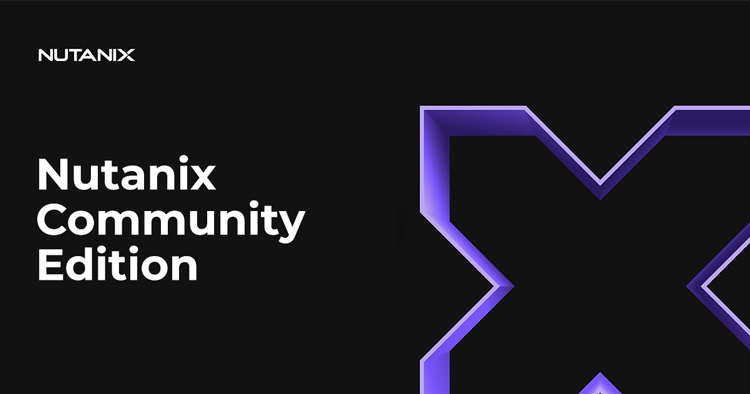What is a hypervisor?
A hypervisor is a software process that creates and runs virtual machines (VMs) and allocates the host server’s compute, storage, and networking resources as needed by each VM. Hypervisors play an essential role in enabling server virtualization, which is itself essential to enabling cloud computing. Broadly speaking, virtualization refers to the use of software to simulate or emulate physical resources. The hypervisor abstracts and isolates the VMs and their programs from the underlying physical server hardware, enabling a more efficient use of physical resources, simpler maintenance and operations, and reduced costs.
Why use a hypervisor?
The primary technological problem that hypervisors solved was that most physical hardware could run only one operating system at a time. This constraint often led to wasted resources, as a single OS seldom fully utilized the hardware’s capacity.
Hypervisors address the above constraint by aggregating the resources of virtualized physical servers (such as memory, network bandwidth and CPU cycles) and then allocating those resources to virtual environments, called virtual machines. Hypervisors are also known as virtual machine monitors (VMM). A VM is essentially a software-based computer, with access to the same resources as a physical computer, including an OS and apps. However, a hypervisor lets you run multiple VMs as guests, thereby using the physical resources of the underlying host machine much more efficiently. Each VM can act as a dedicated machine for every service, app or operating system, allowing you, for example, to run multiple different OSs on a single server. The hypervisor also separates the VMs logically, which protects each individual VM against the effects of problems with other individual VMs on the same hypervisor, such as crashing, errors, or security attacks.
What are the benefits of hypervisors?
Speed, agility, and scalability – Organizations no longer have to provision new environments every time a customer requests it or when a developer needs a testing environment. Virtualization makes it simple and fast to spin up new VMs and get them running whenever they’re needed. Because each server can manage many VMs, scaling is also easy.
More efficient utilization of servers – Hypervisors ensure that a server’s resources are utilized to their fullest. Before virtualization and hypervisors, it was common for an organization to run multiple servers that were each using less than half of their available resources.
Increased security – Even though a physical host server might be running dozens of VMs, each of those VMs is isolated from each other. That’s a benefit if an attacker finds entry into one of the server’s VMs because the attacker won’t automatically be able to infiltrate other VMs on that server through the hypervisor.
Portability and workload balancing – Decoupling the VMs’ operating systems and applications from the physical host makes it easy to migrate a VM from one host to another without disruption. IT can even allocate resources across multiple servers if needed.
Improved resilience – Hypervisors can also quickly and easily move VMs and reallocate resources if a node fails, which helps maintain high availability and increased uptime.
Cost savings – Virtualization enables organizations to save on CapEx because they can use a multitude of VMs on a single physical server and have less need for hardware. Reducing the physical footprint also leads to OpEx savings by reducing costs for electricity, cooling, and maintenance.
Faster data recovery – If data in a VM is corrupted or infected by malware or an attack, some hypervisors enable organizations to restore that data from a snapshot rather than having to restore a full backup.
What are the types of hypervisors?
Type 1 hypervisor
Type 1 hypervisors are installed directly on the physical server, which is why they are also called “bare metal” hypervisors. Direct access to the resources of the physical server makes Type 1 hypervisors highly efficient. This design also makes Type 1 hypervisors more secure, as it limits the attack surface and potential for compromise. Type 1 hypervisors are by far the most common choice within enterprise IT contexts, primarily due to their strong security, scalability, stability, and performance. Examples of the most widely used hypervisors include Nutanix AHV, VMware ESXi, Microsoft Hyper-V, and Citrix Hypervisor.
Type 2 hypervisor
Type 2 hypervisors differ in that they run as applications on a physical server’s preexisting OS. Because they run on the host OS, which sits between the physical server and the hypervisor, they are also known as “hosted” hypervisors. Type 2 hypervisors are not ideal for server-based environments, given that they have a higher latency and risk exposure than Type 1. They are, however, relatively easy to install, and can work well in specific use cases, such as individual PC users who need to run more than one operating system, and where performance and security are not principle concerns.
Get hands-on experience with the Nutanix Cloud Platform on your own hardware. Register today!

What is a cloud hypervisor?
Now that cloud computing is so commonly used by organizations, it’s important to recognize how critical virtualization and hypervisors are in the cloud. A cloud hypervisor oversees and controls the VMs running on physical servers in data centers owned by cloud providers. These hypervisors make it easier to manage distributed workloads across cloud architecture—which is typically multi-tenant, meaning multiple customers are using their own assigned portions of a single architecture.
In the cloud, scalability is near infinite and organizations pay only for the resources they consume. Hypervisors allow these organizations to take advantage of the agility and speed of the cloud. Users can access data and applications in virtual environments but IT still retains control of the organization’s apps and data. Hypervisors also make it easy to move workloads and applications to the cloud, which increases an organization’s agility and efficiency.
Hypervisors vs containers
There are some important similarities between hypervisors and containers, but first and foremost, it’s important to know that they are not the same thing. They both enable virtualization on some level and they are both popular for making modern applications more speedy and efficient. However, they do these things in different ways.
For instance, a hypervisor enables the creation of VMs with their own operating systems and applications, which run independently from the physical servers that host them. Containers are packages of software that contain chunks of an application’s data and configurations. The containers make it possible for that application to run on any operating system. Where the hypervisor decouples the software environment from the physical foundation, containers decouple applications from specific operating systems.
Organizations use hypervisors and containers for different needs. They use hypervisors to maximize physical server utilization and create and manage multiple VMs per host. Containers, on the other hand, are used in developing and deploying specific applications. Containers are ultra-portable and very lightweight, which helps make moving them around fast and easy.
Thanks to the way they are able to abstract elements of VMs and applications from physical hardware and operating systems, both hypervisors and containers are vital parts of today’s most advanced IT architectures.
Hypervisor security considerations
Because a virtual machine (VM) environment is isolated from the rest of a system, whatever operates inside a VM will not affect or interfere with anything else running on the host hardware. In the unlikely event that a VM is compromised, the entire system should not be impacted.
However, cybercriminals have been known to compromise hypervisors. The impact of such a compromise can cause problems for all of the VMs that the hypervisor manages, leaving the data in each VM vulnerable.
Security protocols and requirements may vary based on the type of hypervisor.
Top considerations when selecting a hypervisor
- Complexity - Is it easy to deploy and manage? Is it a separate product, with a separate console, that requires full-time specialists to maintain, operate, and troubleshoot? Is it something that an IT generalist could master relatively quickly?
- Performance - Does it deliver enough performance to support your mission-critical applications? Check out the benchmarks for performance in production (as close to real-world conditions as possible).
- Cost - Does it come with licensing fees, or is it built-in to the larger solution?
- Ecosystem - Does it support a rich ecosystem? For example, does it support the most widely used guest operating systems? Microsoft, Suse, RedHat, Ubuntu, CentOS. Does it support leading enterprise apps and technologies such as Microsoft SQL Server, Microsoft Exchange, SAP, Oracle, Citrix, Splunk, and VMware Horizon?
Benefits of Nutanix hyperconverged infrastructure solutions
The benefits of moving from complex legacy infrastructure to the simplicity of hyperconvergence are many, but among the top reasons organizations make the switch are lower costs, improved, consistent performance, a smaller datacenter footprint, greater efficiency and productivity in IT teams, and maximized infrastructure ROI.
- Turnkey infrastructure - Integrated server, storage, networking and virtualization resources along with end-to-end systems management and operations management capabilities.
- Fast deployment - Deploy infrastructure in minutes, so IT teams can elevate their focus to the applications and services powering the business.
- 100% software-driven - Supports a wide variety of different hardware platforms – including three of the four most popular server platforms in the world.
- Freedom of choice - Use built-in virtualization or bring your preferred hypervisor, and deploy on a wide selection of server vendors or buy a pre-integrated appliance from an OEM.
- Superior performance and resilience - Nutanix HCI software running on each node distributes all operating functions across the cluster.
- Unprecedented flexibility - A single cluster can have unlimited nodes, with node types having differing amounts of storage, CPU and memory resources, so you can run multiple workloads with maximum efficiency.
Related articles:
Explore our top resources

Forrester Wave™: Hyperconverged Infrastructure, Q4 2023 Report

The Definitive Guide to Hyperconverged Infrastructure

ESG Technical Validation: Red Hat OpenShift on Nutanix HCI

Design, architecture, and best practices
Related products and solutions
Nutanix AHV
Modern and secure virtualization platform that powers VMs and containers for apps and cloud-native workloads on-premises and in public clouds.
Business-critical applications
Give all your applications the performance they need plus the availability, security and simplicity of the industry’s best hyperconverged infrastructure.
Nutanix Cloud Infrastructure
Standardize on powerful and secure hyperconverged infrastructure to deliver all applications and data at any scale, on any cloud.

